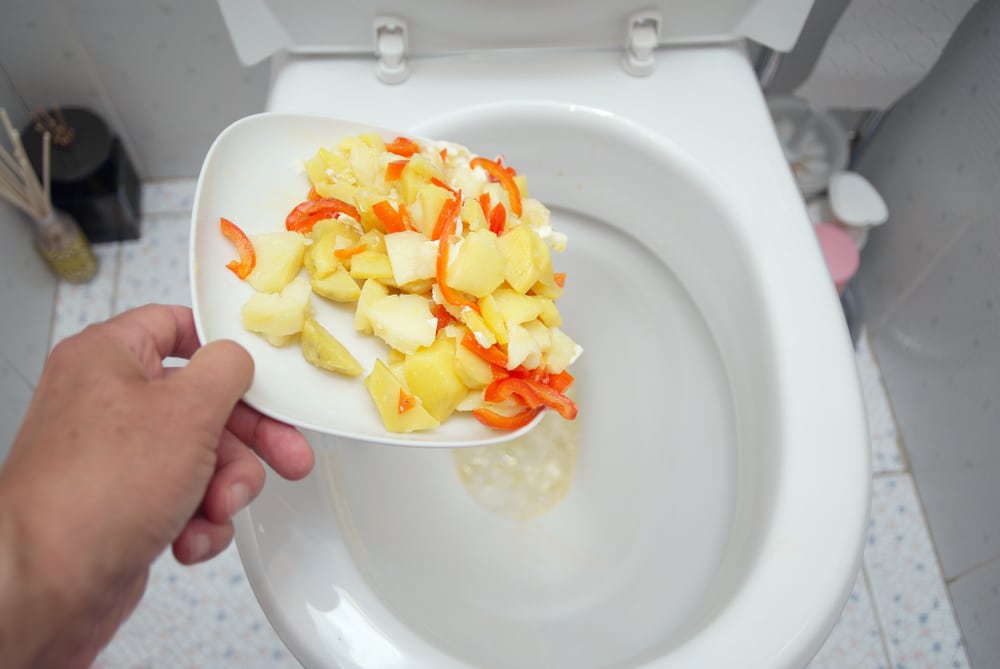Can One to Dispose of Food in the Toilet?
Can One to Dispose of Food in the Toilet?
Blog Article
The writer is making several great annotation on What Can Happen If You Flush Food Down the Toilet? as a whole in the article further down.

Introduction
Many individuals are frequently confronted with the predicament of what to do with food waste, specifically when it concerns leftovers or scraps. One typical question that develops is whether it's okay to purge food down the toilet. In this short article, we'll delve into the reasons why people may think about purging food, the effects of doing so, and alternative approaches for correct disposal.
Reasons that individuals may consider purging food
Absence of awareness
Some people might not recognize the prospective harm caused by purging food down the bathroom. They may wrongly think that it's a safe technique.
Benefit
Purging food down the toilet may seem like a quick and very easy option to getting rid of undesirable scraps, specifically when there's no nearby trash can offered.
Laziness
In some cases, individuals may simply pick to flush food out of sheer negligence, without considering the consequences of their actions.
Repercussions of flushing food down the bathroom
Ecological impact
Food waste that winds up in waterways can contribute to contamination and harm marine ecological communities. In addition, the water used to flush food can strain water sources.
Pipes issues
Purging food can lead to stopped up pipelines and drains, causing pricey pipes repair services and troubles.
Sorts of food that need to not be flushed
Fibrous foods
Foods with coarse structures such as celery or corn husks can get tangled in pipes and create blockages.
Starchy foods
Starchy foods like pasta and rice can take in water and swell, resulting in clogs in pipes.
Oils and fats
Greasy foods like bacon or food preparation oils should never ever be purged down the commode as they can strengthen and trigger clogs.
Proper disposal techniques for food waste
Using a garbage disposal
For homes equipped with garbage disposals, food scraps can be ground up and purged via the pipes system. Nonetheless, not all foods appropriate for disposal in this fashion.
Recycling
Particular food product packaging products can be recycled, minimizing waste and decreasing ecological effect.
Composting
Composting is an eco-friendly way to take care of food waste. Organic products can be composted and used to enhance dirt for gardening.
The importance of correct waste administration
Decreasing ecological damage
Correct waste administration techniques, such as composting and recycling, assistance minimize contamination and preserve natural deposits for future generations.
Safeguarding plumbing systems
By preventing the technique of flushing food down the toilet, house owners can prevent pricey pipes fixings and keep the integrity of their pipes systems.
Conclusion
In conclusion, while it may be alluring to purge food down the commode for ease, it is essential to understand the potential effects of this action. By taking on correct waste administration practices and throwing away food waste properly, people can add to healthier pipes systems and a cleaner environment for all.
FLUSH FOOD DOWN THE TOILET?
FLUSHING FOOD CAN CAUSE BLOCKED DRAINS IN YOUR HOME
All of the plumbing fixtures in your home are connected to the same sewer pipe outside of your home. This outdoor sewer pipe is responsible for transporting all the wastewater from your home to the Council sewer mains. Even small pieces of food that go down the kitchen sink can cause problems for your sewer. It should therefore be obvious that flushing larger bits of food, such as meat, risks a clog in either the toilet itself or the sewer pipes. Flushing greasy food is even more problematic because oil coagulates when it cools, coating the interior lining of your pipes.
THE TOILET IS NOT A BIN
Food isn’t the only thing that people shouldn’t be flushing down the toilet. People use the toilet to dispose of all kinds of things such as tampons, makeup wipes, dental floss, kitty litter and even underwear. Water goes to great lengths to educate residents about the high costs and stress placed on wastewater treatment systems simply from people flushing the wrong stuff down the toilet. It costs taxpayers millions of dollars each year, and homeowners thousands in blocked drain repairs.
FLUSHING FOOD IS A WASTE OF WATER
Flushing food is a waste of our most precious resource - water. In June this year Level 1 water restrictions were introduced to protect water supply from drought conditions. Much of New South Wales continues to be affected by prolonged drought with recent figures revealing up to 97 per cent of the state remains in drought. Depending on whether you have a single or dual flush toilet, every single flush uses between five and 11 litres of water. In the current climate this is a huge amount of water to be wasting on flushing food that should be placed in the bin (or better yet, the compost).
https://www.jabplumbingsolutions.com.au/blog/can-you-flush-food-down-the-toilet

I hope you liked our excerpt about . Thanks a lot for taking a few minutes to browse our blog. Sharing is nice. Helping others is fun. We enjoy your readership.
Get A Free Estimate Report this page